Peninsula de Nicoya, Costa Rica

The Nicoya Peninsula is separated from the mainland of Costa Rica by the Gulf of Nicoya and the Tempisque estuary. From its northern base in the arid Guanacaste lowlands the peninsula extends 140 km to the south where the landscape progressively becomes more moist and hilly.
Tourism and expat living are concentrated along the coast, while the interior is very sparsely populated. Cattle farming shapes much of the landscape against the backdrop of the steep-sided and densely forested interior mountain range.
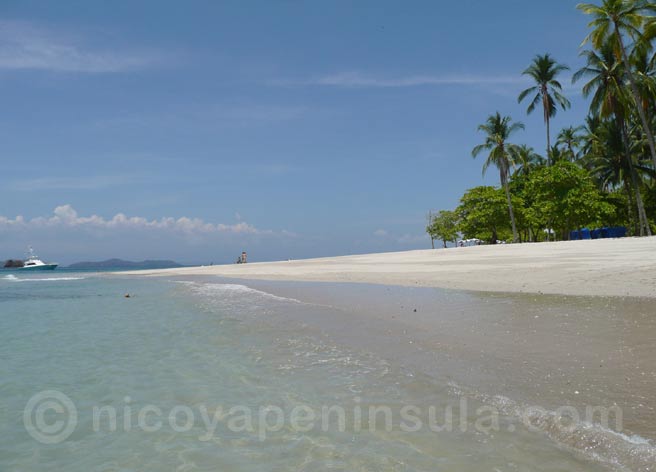
The most noted feature of the Peninsula de Nicoya is its beaches. Within the vast expanse of coastline are innumerable magnificent beaches with dramatic coastal scenery, and small villages, each with its own distinct charm. Water sports such as surfing define many of the local communities. Most areas have been discovered by surfers, as the Pacific side of Costa Rica presents one of the best stretches of surfing coastline in the world.
For eco-tourists, the Nicoya Peninsula beckons with some spectacular natural phenomena, from turtle beaches, to subterranean cave systems, bird hotspots, and marine riches. They are protected in various nature reserves throughout the peninsula.
Various eco systems provide habitats for numerous plant species and wildlife. Many animals are seasonal commuters and migrate between different eco systems. The coastal areas are therefore connected to the mountainous interior by various biological corridors.

Costa Rica’s central Pacific zone experiences two extremely different seasons: the dry season begins in late November and until May the sun drenches the land. Many trees lose their leaves and cars driving on the rutted dirt roads kick up clouds of dust, covering roadside foliage with a dull, brown layer. The first rainfalls to relieve the dry season occur in May, initiating the “little summer” with intermittent rain showers.
Rainfall increases over the following months, becoming very heavy from September to November, when the peninsula is transformed into a dripping, lush rainforest. Temperatures during the rainy season, called winter here, can sometimes drop to 22ºC, while in dry season they can reach 36ºC.
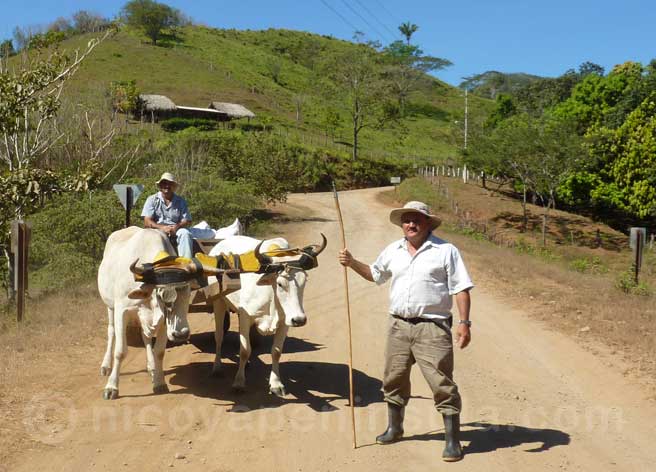
The Nicoya Peninsula is divided into the provinces of Guanacaste, which occupies the larger part in the north, and the province of Puntarenas in the south. Roads connecting the two provinces are still few and in poor condition. The only reliable north-south connection is along the Gulf of Nicoya.
Especially in the southern part of the Nicoya Peninsula, the roads are in a horrendous shape. Most of them are unpaved, rutted and potholed, so that even short distances take a long time to cover. Patience is the key to travelling, so it’s best to slow down and enjoy your holiday in Costa Rica!
The Southern Nicoya Peninsula
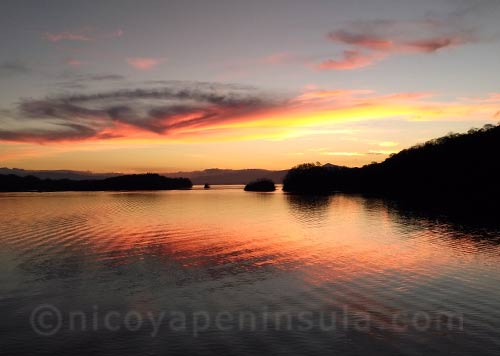
The southern Nicoya Peninsula has long been one of Costa Rica’s most secluded gems. From the hilly interior, the mountains sweep down to the Pacific Ocean, creating some of the most pristine and secluded beaches in Costa Rica.
This tropical paradise has long been off the beaten path. It was cut off from the Costa Rican mainland by the Gulf of Nicoya and roads on the peninsula were barely driveable. Since the most popular entryway to the southern Peninsula de Nicoya is by ferry from Puntarenas, the region belongs to the province of Puntarenas and not to Guanacaste.
Since the turn of the millennium, roads, ferry services, and public transport have improved significantly and the development of the beach villages has taken off.
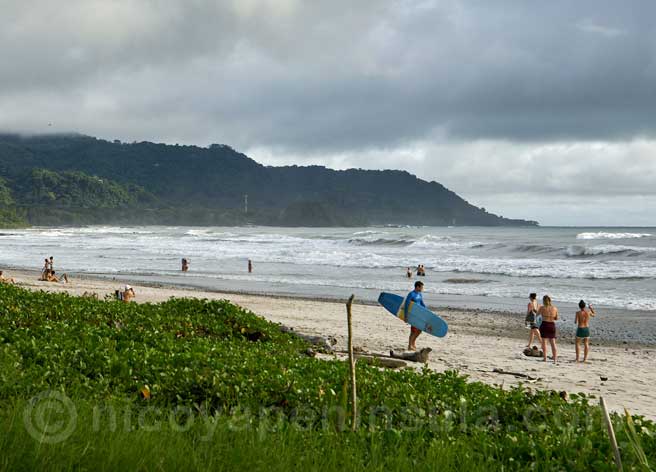
Santa Teresa, in particular, has transformed from a sleepy beach hamlet into a booming surf town. Real estate is in high demand and the number of permanent expatriate residents and visiting tourists is growing rapidly. Other popular tourist destinations include the offbeat enclave of Montezuma, with its vibrant street life and scenic waterfalls. Tambor, located in a vast horseshoe bay, hosts the only large holiday resort of the southern peninsula. And the tiny fishing hamlet of Malpais attracts nature lovers to its rocky, though scenic coastline.
Lodging options range from cabinas and hostels for surfers to luxurious vacation rentals and top notch hotels. Fortunately, as of now, package tourism and chain hotels are not common to the area.

While Guanacaste is known for its dry climate, the southern Nicoya Peninsula receives more rain and is considered a transitional zone between dry forest climate and tropical rain forest. To experience the abundant flora and fauna eco tourists can can visit the Cabo Blanco Reserve. It sits at the very tip of the Nicoya Peninsula and was the first national park created in Costa Rica.
The Northern Nicoya Peninsula
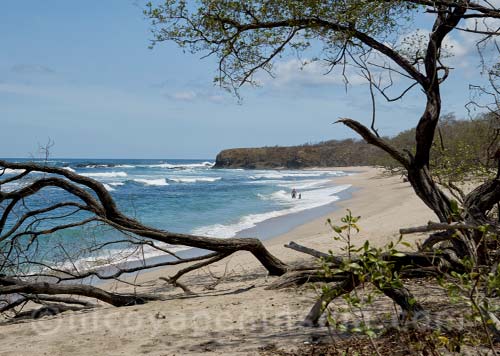
The northern part of the Nicoya Peninsula belongs to the province of Guanacaste, whose Pacific coast is made up of countless stretches of sun-swathed beaches, divided by rocky bluffs and river estuaries. Some of Costa Rica’s most famous surf and vacation spots are found in this region.
The surf capital and touristic center of Guanacaste is the bustling beach town of Tamarindo. It is Costa Rica’s most developed beach area and boasts a large variety of hotels and services. Surfing takes center stage in Tamarindo, as it does on the surrounding beaches. To the north of Tamarindo, surfers frolic on Playa Grande while to the south, a series of surf spots includes Playa Langosta, Avellanas and Playa Negra.

Many beaches and river estuaries are protected wildlife reserves. On Playa Grande, the rare leatherback sea turtles lay their eggs into the sand, and Ostional is one of the world’s most significant nesting sites for olive ridley sea turtles.
For those who want to spend a beach vacation in Costa Rica the relaxed village of Samara offers perfect swimming and bathing in its protected half-moon bay. Nearby, the yoga and surf community of Nosara is ensconced in a jungle by the beach and offers many services for both physical and spiritual well-being. Inland, the pleasant town of Nicoya is the cultural center of the Nicoya Peninsula and boasts Costa Rica’s oldest colonial church.

The interiors of the peninsula are still steeped in traditions – it’s the land of cattle ranches and sabanero’s, the Costa Rican variant of cowboys. Many of Costa Rica’s most colorful traditions have their roots in Guanacaste and its ranching history. Local folklore comes alive during civic fiestas held in countryside villages throughout the dry season. The merry communal parties feature rodeos with bull riding, typical food and dances at night to the sounds of Marimba and Cumbia.
While agriculture and cattle trade still flourish on the Nicoya Peninsula, tourism is becoming increasingly important. Development was fueled when the Tempisque bridge was built to connect the peninsula with the Costa Rican mainland. Additionally, the airport in Liberia was expanded to receive international flights. Chain hotels and luxury resorts have ventured into Costa Rica’s most important vacation region, with real estate companies promoting Guanacaste’s beaches as the “Gold Coast”. Costa Rica’s stable democracy and standard of living attract many foreign investors who buy property in this tropical paradise. Many turn their homes into vacation rentals, contributing to a booming new market. Water resources, however, are limited in Costa Rica’s arid northwest, where the primary tourist season coincides with the annual dry season. » Weather